Artist Benoit Lemercier applies superstring theory to his new show at Paris' Galerie RX
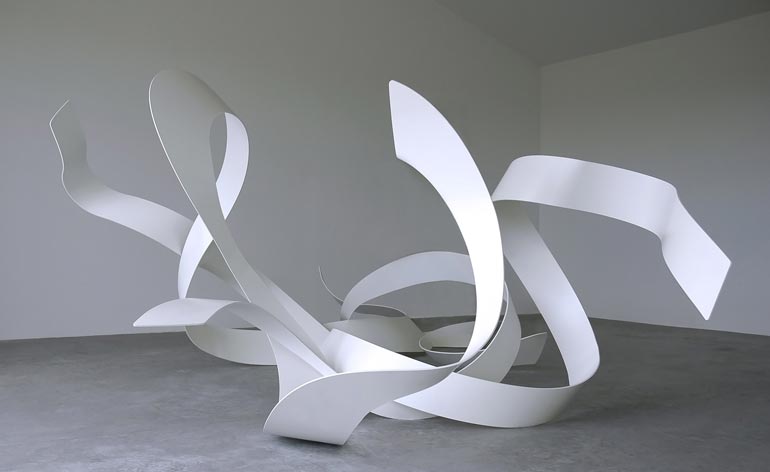
When, at the age of 16, Benoit Lemercier reproduced the Periodic Table in ink on paper, his parents didn’t pack him off to MIT. Instead, they bought him art supplies.
That’s not to say Lemercier wouldn’t have achieved great things as a budding physicist. He exhibits a deep inquisitiveness of physical theory. Yet he chooses to express this interest in the atelier, not the lab. His interpretation of complex scientific hypotheses manifests as profoundly physical art: a paradigm of left brain/right brain synergy.
This week Lemercier will show the latest in his series of dynamic, multifaceted steel sculptures at Galerie RX, in Paris’ 8th arrondissement. His sui generis ‘Hypercube’ is a two-dimensional representation of a fourth-dimensional phenomenon, providing a three-dimensional trompe l’oeil. Mounted flush with the white gallery wall, it illustrates the eponymous hypercube theory, a cube analogue in four-dimensional Euclidean space. He calls this experimental genre ‘mathematism’, a club in which he is the only member.
Lemercier spent his youth modelling solar systems and electronic gadgetry before arriving at his current, more conceptual phase. More than a decade ago he began fashioning steel cubes, cube fragments and cubes-in-cubes, which he painted an ominous matt black. That led to larger 3D monuments he calls ‘spacesculptures’, anamorphic geometries that look fractured from all viewpoints except one, where all the splinters come together in a streamlined graphic.
In 'Hypercubes', Lemercier plays with scale dramatically. But while the cubes portray an infinite concept in a more approachable form, his 'Superstrings' render an infinitesimal concept in bold, life-sized gestures. Here, the artist toys with the scientific theory of the same name, which scientists give to the swirling models of particulate matter that resemble the performance ribbons of rhythm gymnasts and make the study of atomic structures more logical to the eye.
Lemercier’s Superstrings are medleys of white steel ribbon frozen in mid-air in their undulating form, casting bold shadows across the floor. The contrast between these organic white forms and the rigid black Hypercube blocks across the gallery floor is severe and breathtaking – and fascinating for both left- and right-brain types.
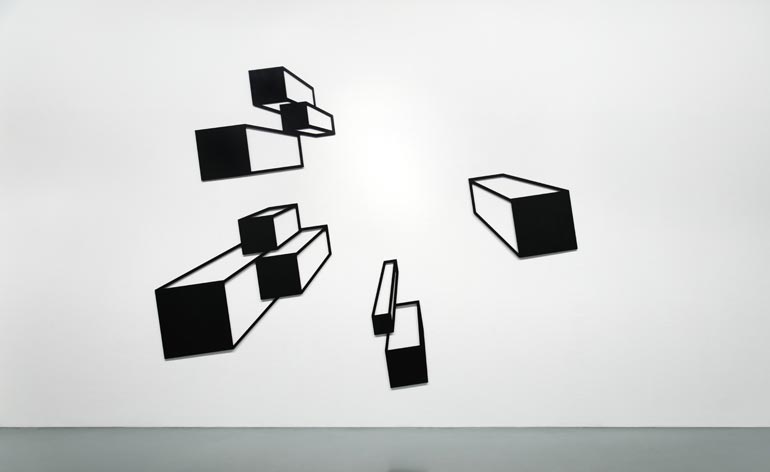
In 'Hypercube', 2013, Lermercier plays with dimensions and scale, rendering an infinite concept in a more approachable form
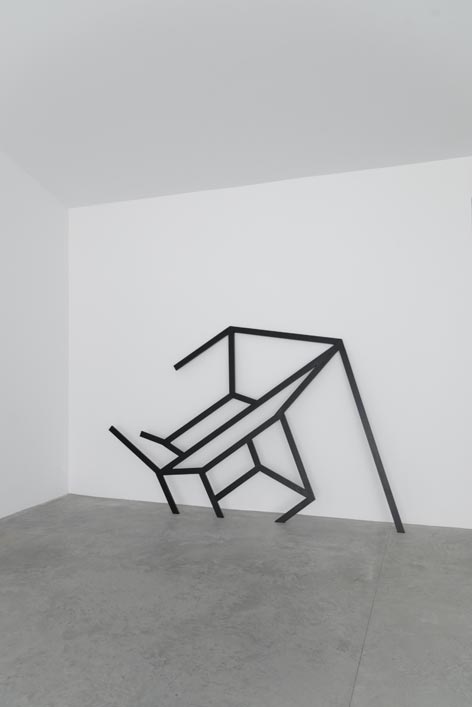
His sui generis ‘Hypercube’ is a two-dimensional representation of a fourth-dimensional phenomenon, providing a three-dimensional trompe l’oeil. Mounted flush with the white gallery wall, it illustrates the eponymous hypercube theory, a cube analogue in four-dimensional Euclidean space
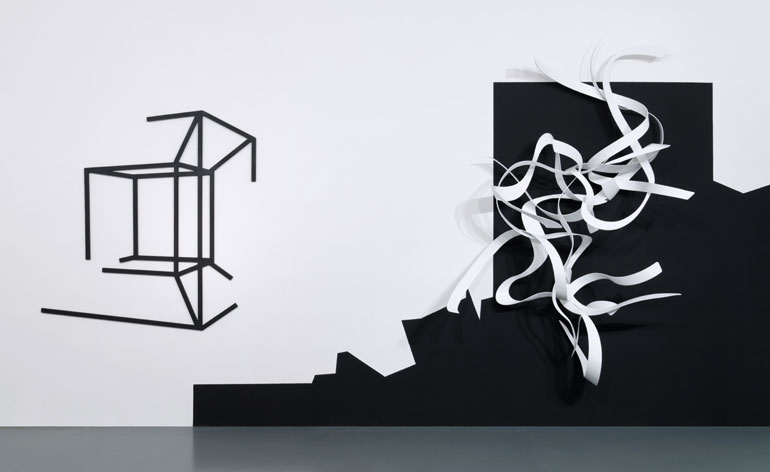
The contrast between these organic white Superstring forms and the rigid black Hypercube blocks across the gallery floor is severe and breathtaking
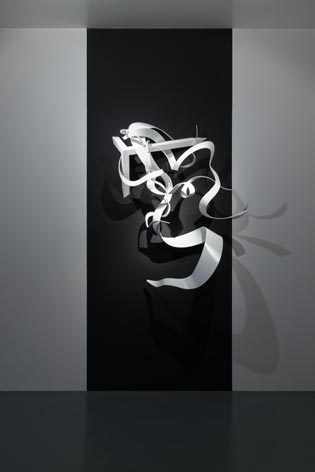
Lemercier’s 'Superstrings' works toy with the scientific theory of the same name, which scientists give to the swirling models of particulate matter that resemble the performance ribbons of rhythm gymnasts
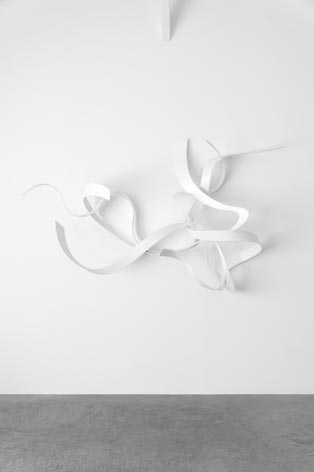
In each, the artist renders an infinitesimal concept in bold medleys of white steel ribbon frozen in mid-air in their undulating form
ADDRESS
Galerie RX
6 Avenue Delcassé
75008 Paris
Receive our daily digest of inspiration, escapism and design stories from around the world direct to your inbox.
Based in London, Ellen Himelfarb travels widely for her reports on architecture and design. Her words appear in The Times, The Telegraph, The World of Interiors, and The Globe and Mail in her native Canada. She has worked with Wallpaper* since 2006.
-
 Holland & Holland's Range Rover is outstanding in its field: shoot the breeze in style
Holland & Holland's Range Rover is outstanding in its field: shoot the breeze in styleCan you spare half a million pounds for a glorified four-wheeled gun cabinet? If so, the Range Rover Holland & Holland Edition by Overfinch might be the perfect fit
-
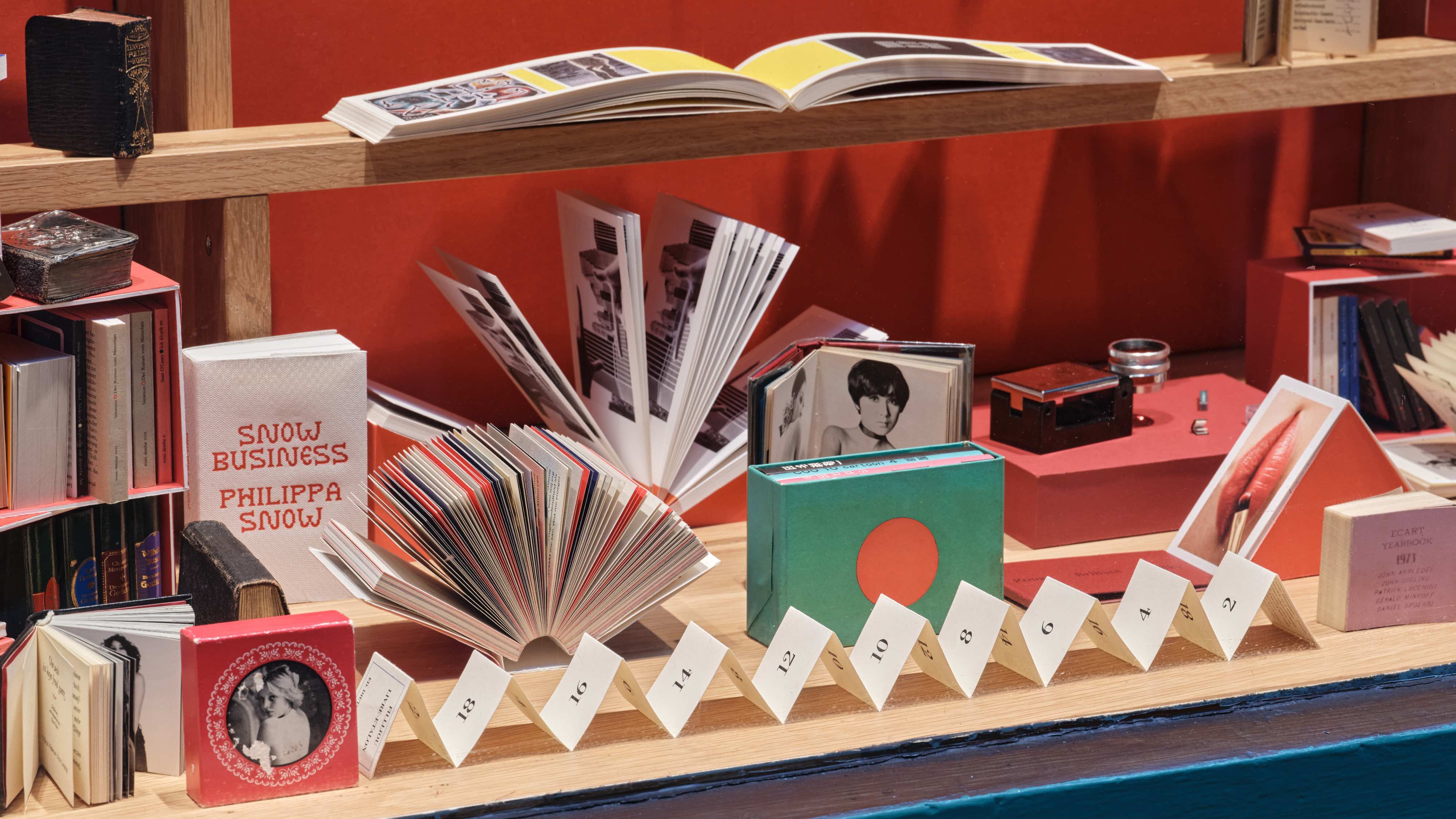 Veronica Ditting’s collection of tiny tomes is a big draw at London's Tenderbooks
Veronica Ditting’s collection of tiny tomes is a big draw at London's TenderbooksAt London bookshop Tenderbooks, 'Small Print' is an exhibition by creative director Veronica Ditting that explores and celebrates the appeal of books that fit in the palm of your hand
-
 How Beirut's emerging designers tell a story of resilience in creativity
How Beirut's emerging designers tell a story of resilience in creativityThe second in our Design Cities series, Beirut is a model of resourcefulness and adaptability: we look at how the layered history of the city is reflected in its designers' output